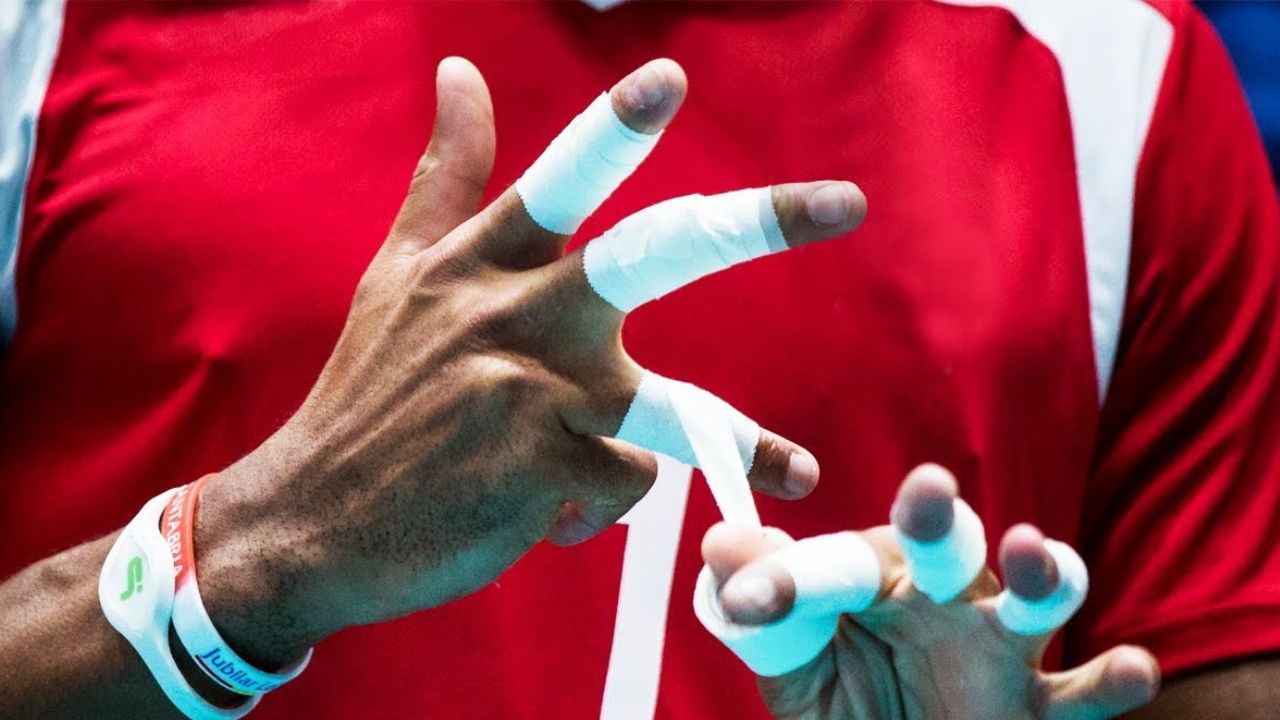The reason why volleyball players tape their fingers, Unveiling the truth behind it
Volleyball Players Tape Their Fingers: Regretfully, volleyball isn’t given the credit it merits as a thrilling sport. Teams are always moving and putting up their best effort to battle for points, resulting in consistently intense action

Volleyball Players Tape Their Fingers: Regretfully, volleyball isn’t given the credit it merits as a thrilling sport. Teams are always moving and putting up their best effort to battle for points, resulting in consistently intense action. It features amazing spikes, lovely blocks, strong serves, and superb teamwork—everything that makes a sport thrilling and competitive.
Even though the game itself receives the majority of attention, some viewers are drawn to the players’ attractive bodies. In fact, people frequently wonder: Why do volleyball players frequently tape their fingers? If you’re one of the inquisitive people, keep scrolling to get the solution!
Why Volleyball Players Tape Their Fingers?
For those who are unaware, volleyball players tape their fingers for two main purposes: to protect their fingertips from injury and to provide them more power and support when playing. It provides support and stability to the fingers by strengthening the joints and ligaments, which is beneficial during the game’s hard and repetitive movements.
Furthermore, because volleyball matches are fast-paced and dynamic, taping their fingers helps protect them from sprains, strains, and other potential injuries.
How to tape your fingers for volleyball is shown here!
Stay still if you want to become the next volleyball superstar because we have a helpful tutorial that will teach you the fundamentals of finger taping for volleyball and get you started in the correct direction.
Get some athletic tape and scissors first. Adhesive bandages or pre-wrap are optional, but they can protect your skin and offer a layer of comfort while the taping is being done.
If you choose to use pre-wrap, encircle the finger or fingers you want to tape with it. As previously indicated, this helps shield the skin from possible irritation brought on by coming into direct touch with tape—which may be extremely unpleasant!
Now start taping the area closest to the hand, which is the base of the finger. To firmly fasten it, wrap the tape around the hand or wrist many times. Wrap the tape across the joint to form a diagonal “X” as you work your way up the finger. This aids in giving the finger tips stability.
The idea is to provide joint support while preserving flexibility, so make sure the tape covers the joints sufficiently without unduly limiting movement. Once you’ve reached the top, secure the tape in place by wrapping it around the finger a few times. However, be careful not to tighten it too much, since this could cut off circulation.
After the taping is finished, test that you still have enough flexibility by moving your fingers in different directions. Without interfering with your ability to comfortably hold or move your fingers, the tape should offer support. Now, repeat these steps for each finger if you’re taping more than one.
There are numerous different methods for taping your fingers besides this one. We advise you to try out a variety of taping techniques to determine which one best suits your needs—it could take some time to discover the one that strikes the ideal balance between support and flexibility.
